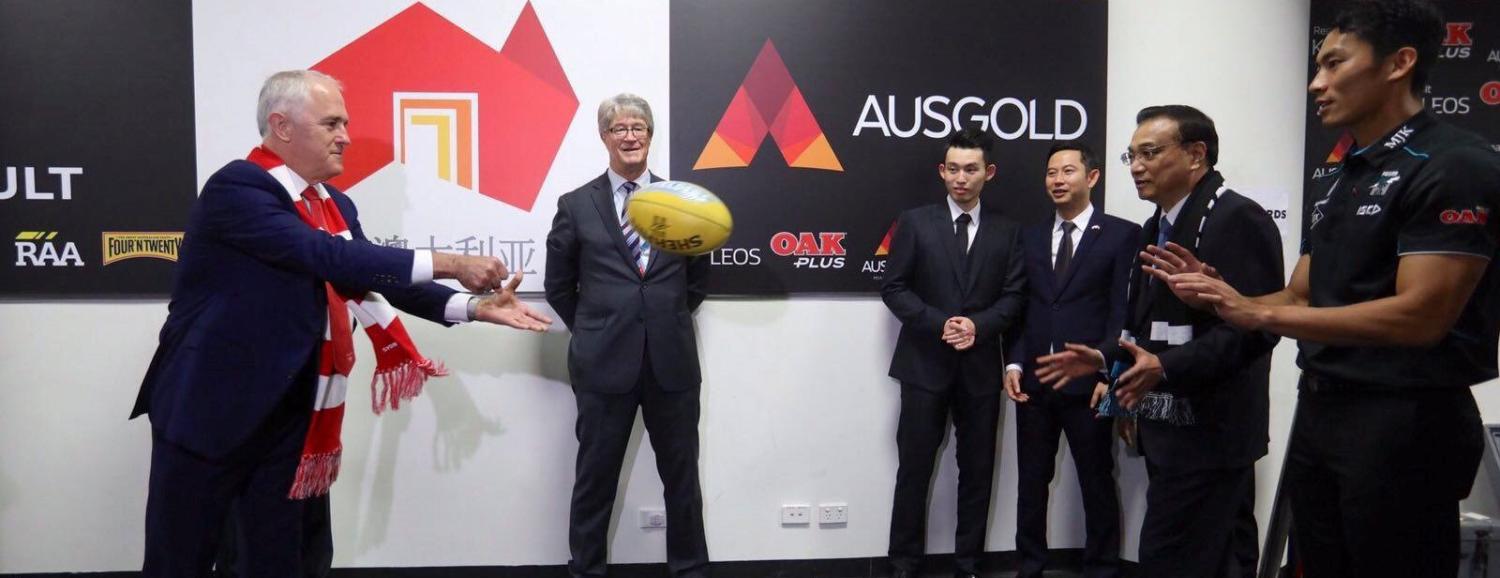On Sunday Chinese Premier Li Keqiang concluded his five-day visit to Australia having signed a slew of bilateral agreements. Li Keqiang last visited Australia in 2009, a year described by former ambassador to China Geoff Raby as ‘our collective annus horribilis’.
Eight years ago, few could have predicted that in his next visit down under, Li would be championing global free trade and open markets as the remedy to American protectionism. Yet Chinese state media coverage of the premier’s visit aimed to communicate exactly that.
The People’s Daily, mouthpiece for the Chinese Communist Party, heralded last Tuesday that Li’s visit would send positive signals on trade and investment liberalisation against the rising trend of protectionism. An article published on Thursday reported that ‘as countries with important global influence … Australia and China will jointly … oppose protectionism’.
Xinhua News Agency also sought to portray China as the defender of free trade and economic globalisation. One article announced that Li’s visit would push China and Australia towards an age of prosperity based on free trade. The China-Australia Free Trade Agreement was frequently used as an example of successful ‘win-win cooperation’.
State media coverage also provided hints at how Beijing perceives its evolving relationship with Canberra.
The day after Li arrived, the state tabloid Global Times ran an editorial that argued ‘there is no reason for Australia and China to confront each other’. It described Australia-China relations as positive and deep with a ‘strong momentum to overcome any problem’. Reference was made to Foreign Minister Wang Yi’s statement last month that Australia can continue to be an ally of the United States while being China’s comprehensive strategic partner.
Global Times has not always been so well disposed to Australia. It has thrice published editorials labelling the nation a ‘paper cat’ for the Australian government’s stance on the South China Sea. Beijing’s position is that the dispute should be resolved between claimant states alone and that ‘foreign interference’ from the US, Japan, and Australia is unconstructive. Indeed, Thursday’s editorial ultimately placed responsibility on Canberra for any hiccups in the bilateral relationship, and briefly chided Australia for its ‘intermittent attacks on China’.
Australia’s Chinese-language media outlets, meanwhile, focused on the crowds of Chinese-Australians and overseas Chinese who gathered to welcome the premier. At a Saturday event in Sydney Town Hall, Li thanked the Australian-Chinese community for their ‘pure hearts on display for the motherland’.
Beijing’s influence over Australia’s Chinese-language media has become a matter of concern in recent months. Over the weekend a UTS professor critical of this Beijing’s growing control over Chinese-language news outlets in Australia was prevented from boarding his return flight to Sydney. Perhaps indicative of this growing influence, the more mundane aspects of Li’s visit were covered almost exclusively by reposts of state media reports.

Australia's PM Malcolm Turnbull with China's Premier Li Keqiang in Sydney on 24 March. (Photo: Brendon Thorne/via Getty Images)
In 2009 Li Keqiang concluded his speech at an Australia-China Business Council luncheon by quoting a Tang Dynasty poem: ‘Bosom friends make distance disappear’. Eight years later and the friendship has only grown stronger, according to Beijing. During a press conference with Julie Bishop last month, Wang Yi said that Australia is an important member of the ‘common circle of friends’ shared by China and the US. Australia is the first and only country to be officially counted within this circle.
Beijing is also observing the debate on whether Australia should seek a more independent foreign policy in the President Trump era. Dr Stephen FitzGerald’s Whitlam Oration, which advocated closer Australian ties and greater influence with China, gained attention in the Chinese press. Commenting on FitzGerald’s speech, one Chinese academic recommended Canberra implement an independent foreign policy to mitigate the dilemma of choosing between Washington and Beijing, while reaping the benefits of strong relations with both.
China’s policy circles view Australia’s situation with a degree of realist scepticism. When news broke of Malcolm Turnbull’s disastrous phone conversation with Trump, there was initially discussion on whether Australia would shift strategically from the US towards China. The consensus formed by China’s commentators was a resounding ‘no’.
Hu Xin from the PLA University of International Relations argued that differences in political systems and ideology make it inherently difficult for Western democracies to truly shift towards China. She added that ‘Australia is a mature middle-power’ which would not ‘handle its foreign policy in such an emotional way’. Canberra would not abandon its security ties with Washington over a single (if offensive) phone call. Foreign Minister Bishop’s lecture in Singapore was later used as evidence that Australia will always have trepidations about a China-led region.
For the time being, Beijing will continue to push the same narrative on its domestic and international audiences: that states in the region can successfully manage a security alliance with the US while engaging in lucrative trade with China. Australia is the poster child of this narrative. But it is a narrative that will be challenged in an increasingly unpredictable era.

